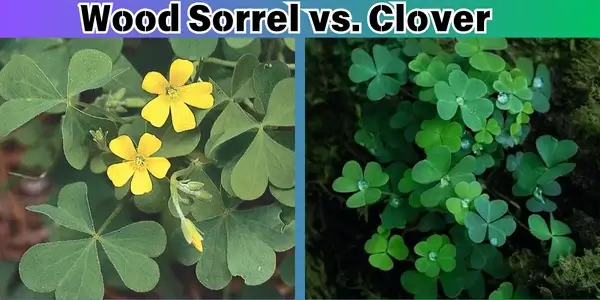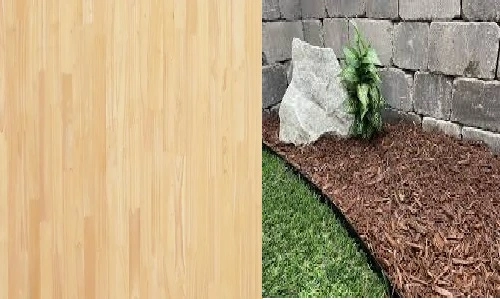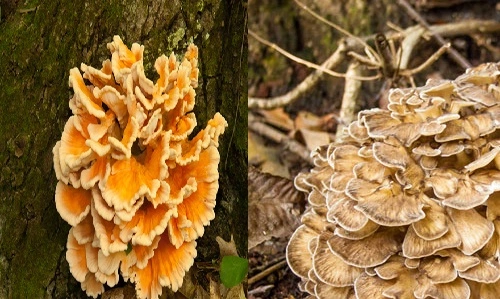For gardeners, homeowners, and outdoor enthusiasts across the USA, distinguishing between wood sorrel and clover can be tricky. Both plants are low-growing, often appear in lawns, gardens, and wild spaces, and feature trifoliate (three-leaf) structures. However, despite their similar looks, wood sorrel and clover differ significantly in appearance, habitat, uses, and impacts on your lawn or garden.
In this article, we’ll explore the key differences between wood sorrel (Oxalis) and clover (Trifolium), helping you identify them, understand their unique traits, and decide how to manage or use them in your outdoor spaces.
Overview of Wood Sorrel
Wood sorrel belongs to the genus Oxalis, which includes hundreds of species found around the world. It is often mistaken for clover because of its trifoliate leaves, but it has distinguishing characteristics that set it apart.
Key Features of Wood Sorrel:
- Leaves: Each leaflet is heart-shaped and often has a crease down the middle. When the plant is exposed to full sun or nighttime, the leaves fold up slightly.
- Color: Bright green to reddish-purple, depending on the species.
- Flowers: Small, bell-shaped flowers with five petals, usually yellow, white, or pink.
- Growth Habit: Wood sorrel grows low to the ground and spreads by both seeds and rhizomes.
- Taste: Leaves have a tangy, lemony flavor due to the presence of oxalic acid, making them edible in moderation.
Overview of Clover
Clover refers to plants in the genus Trifolium. Clover is a legume and is prized for its ability to fix nitrogen in the soil, making it beneficial for lawns, gardens, and agricultural fields.
Key Features of Clover:
- Leaves: Clover has oval-shaped leaflets with smooth edges. The leaflets often feature a whitish, crescent-shaped marking near the center.
- Color: Generally bright green.
- Flowers: Clovers produce rounded flower clusters (known as inflorescences) that are usually white, pink, or red.
- Growth Habit: Clover grows in dense mats and spreads rapidly by stolons (above-ground runners) and seeds.
- Taste: Leaves are mildly sweet and grassy, and certain species are edible.
Key Differences Between Wood Sorrel and Clover

| Feature | Wood Sorrel (Oxalis) | Clover (Trifolium) |
|---|---|---|
| Leaf Shape | Heart-shaped leaflets | Oval-shaped leaflets with smooth edges |
| Leaf Position | Folds up in strong sun or at night | Remains open and flat throughout the day |
| Flower Shape | Five-petaled, bell-like flowers | Round flower clusters (inflorescences) |
| Flower Color | Yellow, pink, or white | White, pink, or red |
| Taste | Tangy, lemon-like flavor (oxalic acid) | Mildly sweet, grassy flavor |
| Growth Habit | Low-growing; spreads via rhizomes and seeds | Dense mats; spreads via stolons and seeds |
| Soil Impact | Neutral to slightly acidic; no nitrogen-fixing | Fixes nitrogen, enriching the soil |
| Edibility | Edible in small quantities | Edible and often used in teas or salads |
Identification Tips
- Examine the Leaves:
- Wood Sorrel: Look for heart-shaped leaflets with a crease down the middle.
- Clover: Oval leaflets with smooth edges and whitish markings near the center.
- Check for Flowers:
- Wood Sorrel: Yellow, white, or pink flowers with five distinct petals.
- Clover: Clusters of small, round flowers that appear fluffy.
- Observe Leaf Behavior:
Wood sorrel’s leaves fold slightly in full sun or at night, while clover’s leaves remain flat throughout the day.
Where They Grow
Wood Sorrel
Wood sorrel thrives in moist, shaded areas, including gardens, forest floors, and shaded lawns. It grows well in acidic or neutral soils and spreads easily when conditions are favorable. While it can tolerate full sun, wood sorrel prefers cooler, damp environments.
Clover
Clover prefers open, sunny locations with well-drained soil. It grows well in lawns, meadows, pastures, and gardens and is particularly valuable in poor soils because of its nitrogen-fixing properties. White clover (Trifolium repens) is the most common clover species found in American lawns.
Uses of Wood Sorrel and Clover
Wood Sorrel
- Edible Plant: Wood sorrel’s tangy leaves can be eaten raw in small quantities, adding a citrus-like flavor to salads, soups, and teas. However, excessive consumption should be avoided due to its oxalic acid content.
- Medicinal Use: Historically, wood sorrel was used for its antioxidant and cooling properties.
Clover
- Soil Enrichment: Clover is a nitrogen-fixing plant, which means it adds nitrogen to the soil, improving its fertility. Many homeowners and farmers use clover as a natural fertilizer.
- Ground Cover: Clover is often used in lawns as a low-maintenance, drought-tolerant ground cover. It’s resilient, stays green, and requires less mowing.
- Edible Plant: Clover flowers and leaves can be eaten fresh, steeped into teas, or used in recipes like clover blossom jelly.
Managing Wood Sorrel and Clover in Lawns
For homeowners, both plants may be considered weeds in traditional turfgrass lawns, but their presence can offer benefits:
- Managing Wood Sorrel:
- If you want to remove wood sorrel, regular weeding, mowing, and maintaining thick, healthy grass can help.
- Wood sorrel thrives in poor lawn conditions, so proper lawn care (aeration, fertilization) will discourage its spread.
- Managing Clover:
- Clover is often intentionally added to lawns for its ability to fix nitrogen and stay green without additional fertilizer.
- To remove unwanted clover, mow frequently, aerate the soil, and apply organic or chemical herbicides as needed.
Should You Keep Them or Remove Them?
- Keep Clover If:
- You want a natural, low-maintenance lawn with improved soil health.
- You appreciate the aesthetic of clover’s small white or pink flowers.
- Keep Wood Sorrel If:
- You enjoy its tangy, edible leaves and flowers.
- You like its unique, delicate appearance in shaded areas or garden edges.
- Remove Either If:
- You prefer a uniform, traditional lawn.
- These plants are crowding out grass or garden plants.
Conclusion
While wood sorrel and clover may look similar at first glance, they have distinct differences in leaf shape, flowers, behavior, and ecological impact. Clover offers excellent soil benefits, low maintenance, and drought tolerance, making it a favorite for eco-friendly lawns. Wood sorrel, on the other hand, adds charm to shaded spaces and can even serve as a tangy edible addition to your dishes.
Whether you choose to embrace these plants for their natural beauty and benefits or manage them as unwanted weeds, understanding their differences ensures you make the best decision for your lawn and garden.

